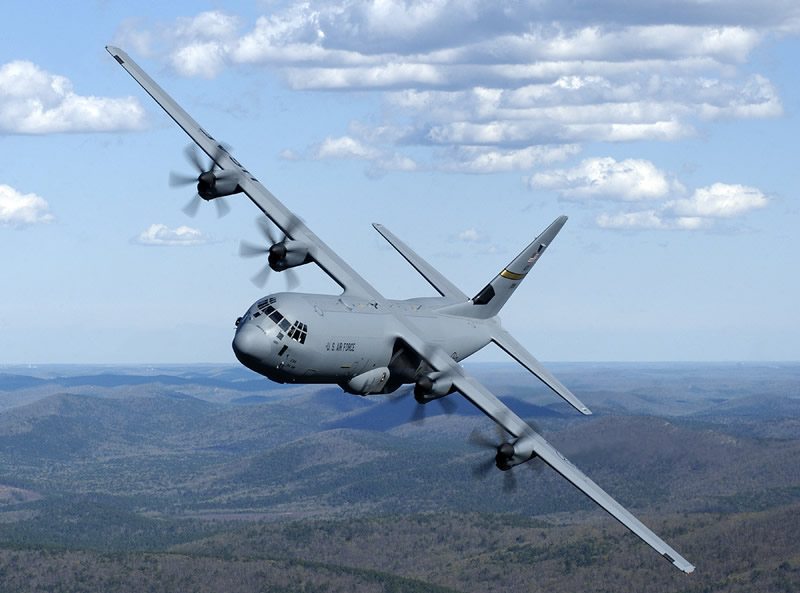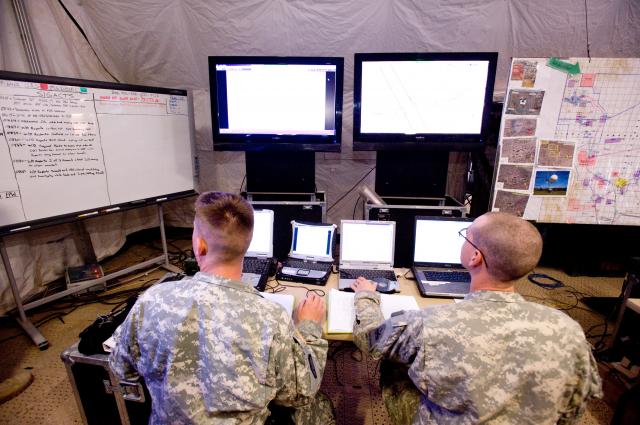As the first MC-130J Combat Shadow II rolled off the Lockheed Martin factory line, a training flight class recently conducted sorties in preparation for transition to the new airframe.
The Air Force Special Operations Training Center’s first MC-130J training program flight class practiced air drops, aerial refueling and formation on an EC-130J Commando Solo at Harrisburg International Airport, PA recently.
AFSOTC officials worked in conjunction with members from the 193rd Special Operations Wing, Marines and National Guard Bureau officials to kick-start a training program two years in the making.
“This first class is a small group try-out designed to validate our syllabus of instruction for the remaining classes,” said Maj. Robert Deka, the AFSOTC MC-130J training program manager.
In a phase AFSOTC commander Col. Mark Alsid referred to as “train the trainer,” the program has pooled the best instructors to provide academic instruction to air commandos who will take that knowledge and bring it back to their home bases.
“AFSOTC is setting the stage for the future of this platform, and the MC-130J is a huge addition to the AFSOC fleet, so we have to get it right,” Colonel Alsid said.
The program features pilot, combat systems officer and loadmaster training with different facets held in California, New Mexico, Mississippi, Pennsylvania and Florida.
After completing training in their respective areas, the flight class members met in Harrisburg for the first time to practice piloting the J-model with a reduced number of crew, which required enhanced coordination among members.
The MC-130J is manned by a five-member crew. This is a reduction in size from the standard eight-member MC-130P Combat Shadow crew, Major Deka said.
With no flight engineer or radio systems operator, the loadmaster will assume many of the duties previously designated to those positions, including the complete preflight and loading of cryptic codes, said Master Sgt. Scott Reed, the AFSOTC lead J-model loadmaster.
The loadmaster will also be a systems expert.
The combat systems operator will also engage in less traditional navigation duties as he handles in-flight helicopter refueling procedures normally conducted by the flight engineer, he said.
No glitches occurred while coordinating these functions, Sergeant Reed said. Though this was the first class training flight on the Commando Solo, program instructors have been using MC-130J procedures for a few years.
Sergeant Reed has been involved with the training program since its inception two years ago. He said he was honored to jump in headfirst and apply his knowledge of the MC-130P Combat Shadow to developing a training plan for the J-model alongside a select group of talented aviators, which includes some from the Combat Talon community.
“It’s rewarding,” he said. “We literally started with nothing.”
Lt. Col. Tobin Wong, a AFSOTC evaluator pilot and MC-130J subject-matter expert, echoed the sentiments of Sergeant Reed.
“It’s exciting. A lot of hard work has gone into the training,” Colonel Wong said. “But we could not have gotten to this point without the support of the 193rd SOW.”
In addition to qualifying crew members in MC-130J procedures, the program is designed to keep those qualified current until the Combat Shadow II is delivered later this year, Major Deka said.
The goal is to have at least five crews, or 25 members, trained by September, he said.
The EC-130J sorties will continue to take place in Harrisburg through the spring, Major Deka said. The program instructors, many of whom are among the few MC-130J subject-matter experts in the Air Force, will continue to develop the training in anticipation of the arrival of the streamlined airframe.
“The ability to get things right and set standards now is great,” Sergeant Reed said. “It’s certainly an outstanding time to be an aviator at AFSOC.”
These sorties approach the culmination of AFSOC commander Lt. Gen. Donald Wurster’s priority to recapitalize the fleet by acquiring up to 37 MC-130Js to replace aircraft that have been flying combat missions for up to 40 years.
The MC-130J will replace aging MC-130E Combat Talon I and MC-130P Combat Shadow aircraft.
The Combat Shadow II will fly clandestine, low-level aerial refueling missions as well as infiltration, exfiltration and resupply missions.










